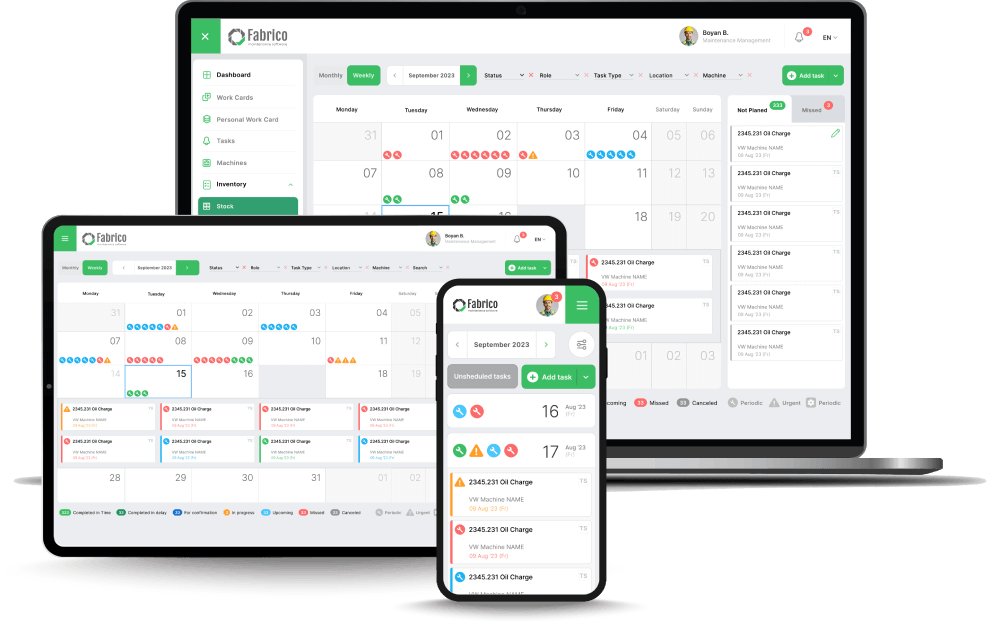Apart from lean maintenance tools that you can use at your manufacturing plant or facility, there are also important techniques to be aware of as you go about implementing lean methodology into your daily operations. Some of the manufacturing project management tools and techniques are covered in more detail below.
The 5S philosophy
The 5S philosophy comes from Japan. The idea is that an average worker follows it to support maintenance processes. In short, the 5Ss are: sort, straighten, shine, standardise and sustain. In terms of “sort”, it’s necessary to make a decision as to which materials are to be used and which are to be discarded. “Straighten” refers to keeping areas organised so that less time is wasted.
When it comes to “shine”, workers are expected and encouraged to keep their tools, equipment and work areas clean and tidy. For “standardise”, a plan needs to be put in place for how the first three S’s will be performed. Finally, there is “sustain”. This means implementing a cyclical process that supports new practices based on audits, which helps sustain the remaining four S’s over the long term.
Kaizen events
Whether it is to implement the 5S principles or address problematic aspects of the organisation or maintenance processes, Kaizen events take centre stage when it comes to iteration. These events are usually quite short-term in nature (such as over the period of one week). However, they are highly beneficial because they are held regularly, thus fostering a mindset of continuous improvement.
They encourage teams in various parts of the organisation to always strive to improve or take small steps towards the best outcomes for the organisation. Another Japanese principle, it was coined by Toyota and it involves regular audits and updates to processes and procedures for continuous improvement.
JIT inventory management

JIT or “just-in-time” in the maintenance context, involves making changes to how inventory is managed. It is also part of lean manufacturing and lean maintenance. In maintenance, it is used to refer to how inventory, spare parts and tools are managed.
For this reason, it is necessary to have a well-planned maintenance schedule and on-hand information about the condition of individual assets. This way, you can ensure that the right parts arrive as close as possible to the time that they will be needed. Often, it is implemented through the use of CMMS software, which combines it with predictive or preventive maintenance.
Distributed MRO inventory
Although it was often a past practice to keep all inventory in a specialised warehouse or at a specific location, with modern lean maintenance today, this practice is quickly becoming outdated. The lean approach focuses on creating multiple store locations that are situated close to the area where they will be used.
These locations where spare parts and inventory are stored should contain relevant and area-specific parts and tools. This, in turn, requires long-term planning for maximum effect. For this purpose, CMMS tracking data is relied on to ensure maximum availability without holding excess amounts of stock.
Total productive maintenance (TPM)
The ultimate foundation of lean maintenance is total productive maintenance (TPM). As the name suggests, it is a holistic approach that aims to achieve perfection in production.
In manufacturing facilities, this perfection includes minimal breakdowns and delays as well as accidents related to assets, equipment and staff.
A major part of ensuring that TPM is achieved is by adhering to proactive maintenance. This is achieved by training autonomous teams, supported by both supervisors and high-level executives.
Mistake-proofing
Much like the name suggests, mistake-proofing is about creating plans and implementing detailed and user-friendly procedures to ensure that mistakes are kept to an absolute minimum.
Examples of ways in which this can be achieved include creating detailed work orders, colour-coding lubricants and cleaning supplies, clearly defining preventive maintenance procedures, placing labels on all equipment and others.
CMMS system
Ultimately, lean manufacturing maintenance is achieved by implementing manufacturing inventory management software or a CMMS system. The system should be used by autonomous teams who receive work orders as efficiently as possible.
With the right CMMS implemented at your organisation, you can streamline maintenance planning and scheduling processes, work order management and other critical components involved in maintenance management, such as inventory and spare parts management.






